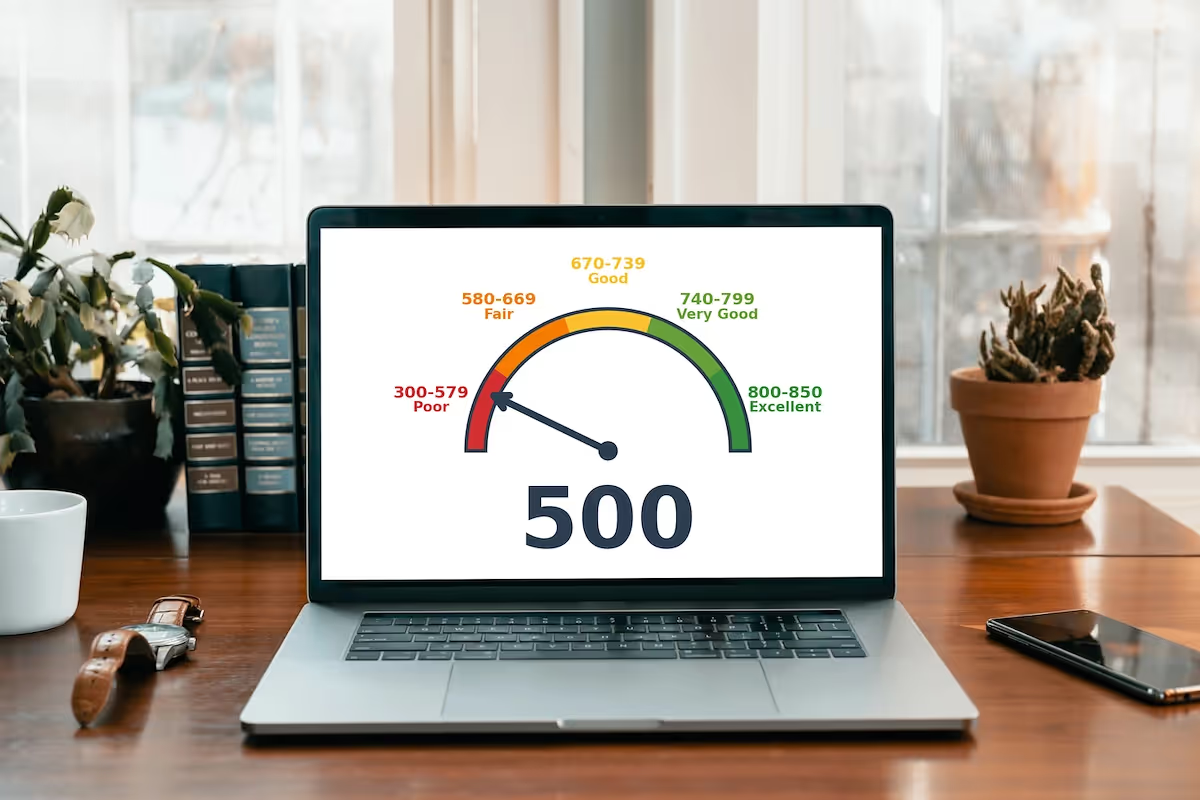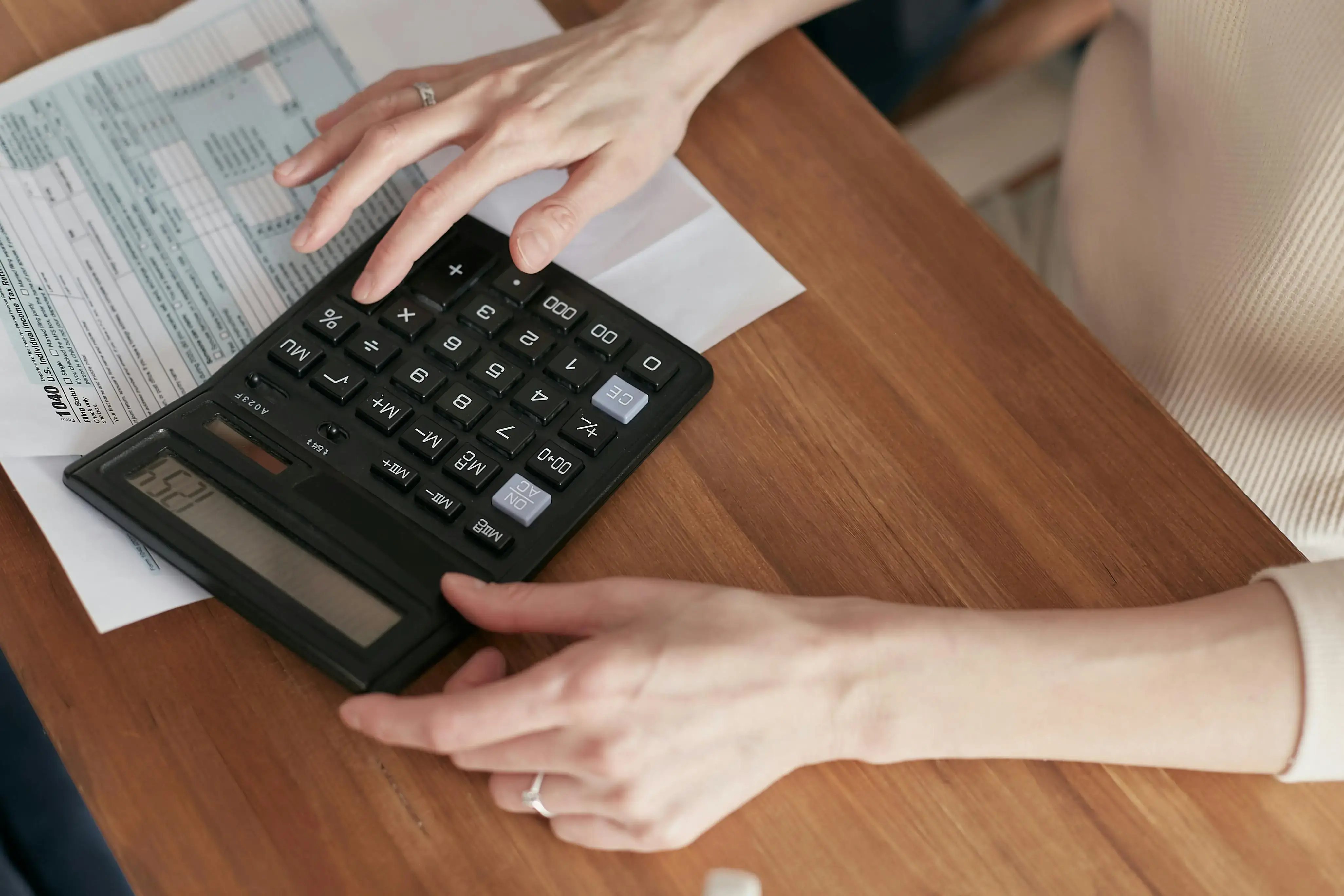
Kudos has partnered with CardRatings and Red Ventures for our coverage of credit card products. Kudos, CardRatings, and Red Ventures may receive a commission from card issuers. Kudos may receive commission from card issuers. Some of the card offers that appear on Kudos are from advertisers and may impact how and where card products appear on the site. Kudos tries to include as many card companies and offers as we are aware of, including offers from issuers that don't pay us, but we may not cover all card companies or all available card offers. You don't have to use our links, but we're grateful when you do!
500 Credit score: What You Need to Know in 2025
July 1, 2025


TL;DR
While a 500 credit score presents some financial challenges, it's best viewed as a foundational step toward building a healthier credit profile. According to the FICO model, a score in this range is considered "poor," signaling a clear opportunity for growth.
What Does a 500 Credit Score Mean?
A FICO score of 500 places you in the "poor" credit range, which typically includes scores from 300 to 579. Lenders view scores in this bracket as a sign of significant financial risk, indicating a history of credit missteps. It suggests you may have had trouble meeting past payment obligations, which can make securing new credit a challenge.
Financially, this score can be a major hurdle. You may face outright denials for loans and credit cards, or get approved with steep interest rates and unfavorable terms. This makes borrowing more expensive and can limit your options for major purchases. While it's a difficult position, understanding where you stand is the first step toward building a stronger financial future.
Who Has a 500 Credit Score?
Credit scores tend to rise with age, as people have more time to establish a positive payment history. According to data from Experian for 2023, the average FICO score increases with each successive generation:
- Generation Z (ages 18-26): 680
- Millennials (ages 27-42): 690
- Generation X (ages 43-58): 709
- Baby Boomers (ages 59-77): 745
- Silent Generation (ages 78+): 760
Credit Cards With a 500 Credit Score
A credit score of 500 falls into the "poor" range, which can significantly hinder your ability to qualify for most traditional credit cards. Lenders view this score as an indicator of high risk, meaning they are less likely to approve your application due to concerns about your ability to manage debt responsibly. While approval isn't impossible, you'll likely be limited to secured cards or unsecured cards designed for bad credit, which often come with higher interest rates and lower credit limits.
Kudos offers AI-powered tools like the Explore Tool and Dream Wallet that analyze your preferences and spending habits to find the best card for you. These features provide personalized recommendations and offer insights into how different cards may impact your credit score, helping you make a more informed financial decision.
Auto Loans and a 500 Credit Score
A credit score of 500 places you in the deep subprime category, which can make securing an auto loan challenging. Lenders view this score as high-risk, leading to significantly higher interest rates, as shown in the 2025 rate data below.
- Super-prime (781-850): 5.25% for new cars and 7.13% for used cars
- Prime (661-780): 6.87% for new cars and 9.36% for used cars
- Non-prime (601-660): 9.83% for new cars and 13.92% for used cars
- Subprime (501-600): 13.18% for new cars and 18.86% for used cars
- Deep subprime (300-500): 15.77% for new cars and 21.55% for used cars
Mortgages at a 500 Credit Score
With a 500 credit score, your mortgage options are very limited. The main path available is an FHA loan, but it comes with a significant string attached: you must provide a down payment of at least 10%. According to mortgage requirements, most other loan types, including conventional, VA, and USDA, are generally out of reach. While some specialty lenders may work with lower scores, these opportunities are rare and often have less favorable conditions.
Beyond limiting your choices, a 500 credit score directly results in less favorable loan terms. You can expect to face much higher interest rates, which increases the total cost of your home over the life of the loan. For FHA loans, you'll also pay more in mortgage insurance premiums. Lenders will view you as a higher-risk borrower, leading to stricter underwriting and a more thorough review of your financial history before approval.
What's in a Credit Score?
Understanding your credit score can feel like trying to solve a complex puzzle, as it's a blend of several key financial habits. The most common factors that determine your score include:
- Your payment history tracks whether you have paid past credit accounts on time.
- Credit utilization is the percentage of your available credit that you are currently using.
- The length of your credit history considers the age of your oldest account and the average age of all your accounts.
- Credit mix refers to the variety of credit products you have, such as credit cards, retail accounts, and loans.
- New credit inquiries and recently opened accounts can also temporarily impact your score.
How to Improve Your 500 Credit Score
Don't be discouraged by a low number; improving your credit score is entirely possible. With consistent, positive financial habits, you can see meaningful changes in your score in as little as three to six months.
- Monitor your credit reports. Regularly check your reports from all three major bureaus to identify and dispute any inaccuracies that could be unfairly lowering your score. Correcting errors is one of the quickest ways to achieve a score boost.
- Establish automatic bill payments. Set up automatic payments for all your bills to ensure you never miss a due date, as payment history is the most significant factor in your credit score. Establishing a consistent record of on-time payments is fundamental to rebuilding your credit profile.
- Reduce your credit utilization. Concentrate on paying down balances on any credit cards to lower your credit utilization ratio, ideally keeping it below 30%. This demonstrates to lenders that you can manage debt responsibly and aren't reliant on credit.
- Apply for a secured credit card. A secured card is an excellent tool for those with damaged credit, as it requires a cash deposit that acts as your credit limit. These cards report to the major credit bureaus, allowing you to build a positive payment history when you might not qualify for traditional cards.
You can also use a financial companion like Kudos to help manage your credit cards and monitor your score as you work to improve it.
Unlock your extra benefits when you become a Kudos member

Turn your online shopping into even more rewards

Join over 400,000 members simplifying their finances

Editorial Disclosure: Opinions expressed here are those of Kudos alone, not those of any bank, credit card issuer, hotel, airline, or other entity. This content has not been reviewed, approved or otherwise endorsed by any of the entities included within the post.



































.webp)



.webp)



.webp)

